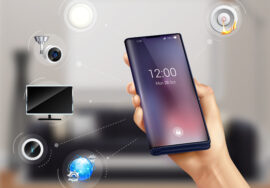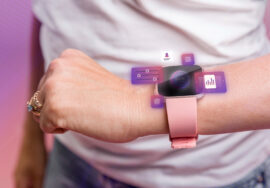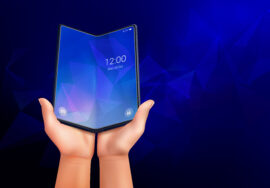
Beyond Bluetooth: Emerging Connectivity Standards Powering Next Gen Consumer Tech
Introduction: Why Connectivity Defines the Future of Consumer Tech
The evolution of consumer technology has always been tied to how devices connect and interact. From wired cables to the rise of Wi-Fi and Bluetooth, each leap has enabled smarter, faster, and more seamless device integration. However, as modern Electronics & Gadgets demand higher bandwidth, lower latency, and greater energy efficiency, Bluetooth alone can no longer carry the load. This shift has given rise to emerging connectivity standards that promise to power the next wave of consumer innovation.
The Limitations of Bluetooth in Today’s Tech Landscape
Bluetooth has been the workhorse of short-range connectivity for decades, enabling everything from wireless audio to fitness trackers. While it remains essential, its limitations are becoming more evident:
- Limited Range: Most Bluetooth devices top out around 30 feet indoors.
- Data Bandwidth Constraints: Ideal for audio, but insufficient for high-resolution streaming or real-time data-heavy applications.
- Interference: Congestion in the 2.4GHz band affects reliability.
- Battery Trade-Offs: Low Energy Bluetooth helps, but isn’t optimized for all applications.
These challenges have pushed the tech industry to develop new standards that complement or even replace Bluetooth in certain contexts.
Ultra-Wideband (UWB): Precision Meets Performance
Ultra-Wideband (UWB) has quickly gained attention for its ability to deliver pinpoint accuracy in location tracking and secure device-to-device communication. Unlike Bluetooth, UWB offers centimeter-level precision, making it ideal for applications such as smart car keys, indoor navigation, and device handoffs.
Key Benefits:
- High-precision spatial awareness
- Faster and more secure connections
- Minimal interference compared to Bluetooth
- Emerging role in AR/VR device positioning
Tech giants like Apple, Samsung, and Xiaomi have already integrated UWB chips into smartphones and wearables, signaling that UWB will play a critical role in the next wave of Electronics & Gadgets.
Wi-Fi 7: The Backbone of High-Bandwidth Experiences
If Wi-Fi 6 laid the foundation for faster internet, Wi-Fi 7 aims to redefine wireless performance altogether. Expected to deliver speeds up to 40 Gbps, Wi-Fi 7 provides the bandwidth and stability necessary for cloud gaming, 8K streaming, and VR applications.
Why It Matters:
- Ultra-low latency for real-time gaming and conferencing
- Multi-link operation for greater reliability
- Higher spectrum efficiency compared to Wi-Fi 6
- Designed for smart homes with numerous connected devices
Wi-Fi 7 will not replace Bluetooth directly but will serve as a backbone for high-demand devices like gaming laptops, streaming hubs, and AR/VR headsets.
Matter: The Universal Smart Home Language
One of the most exciting emerging standards is Matter, designed to solve a long-standing problem in the smart home space: interoperability. Instead of requiring brand-specific hubs, Matter enables devices from different manufacturers to work together seamlessly.
Advantages for Consumers:
- True cross-platform compatibility (Apple, Google, Amazon, Samsung)
- Simpler setup for IoT devices
- Energy-efficient communication
- Strong security protocols
Matter doesn’t compete with Bluetooth directly; rather, it ensures that devices across ecosystems integrate smoothly, reducing fragmentation and consumer frustration.
5G and 5G Advanced: Expanding Beyond Mobile
While 5G is often associated with smartphones, its real potential lies in expanding connectivity for IoT and wearables. With ultra-low latency and widespread coverage, 5G enables always-connected devices that can handle real-time data processing. The upcoming 5G Advanced will further enhance reliability, efficiency, and integration with AI-driven networks.
Use Cases:
- Cloud gaming on portable devices
- Smart city infrastructure
- Remote healthcare monitoring
- Autonomous vehicles
For Electronics & Gadgets, this means that even traditionally offline devices—like cameras or appliances—can remain always connected without relying solely on Wi-Fi.
Near-Field Communication (NFC) Evolution
NFC has been powering contactless payments for years, but its applications are expanding rapidly. The next wave of NFC use cases includes secure access control, health monitoring, and even wireless charging for small devices. Compared to Bluetooth, NFC excels in power efficiency and security for close-range interactions.
Satellite Connectivity in Consumer Tech
Satellite internet was once reserved for remote regions, but with the emergence of providers like Starlink and smartphone satellite SOS features, this technology is becoming mainstream. In the future, satellite connectivity could complement Bluetooth and Wi-Fi by ensuring devices stay connected anywhere in the world, even without cellular towers.
How These Standards Work Together
The future isn’t about one standard replacing another; it’s about complementary ecosystems. For example:
- Bluetooth + UWB: Bluetooth may handle simple pairing, while UWB manages precision location tracking.
- Wi-Fi 7 + 5G: Wi-Fi powers home devices, while 5G ensures seamless mobility.
- Matter + NFC: Matter enables interoperability, while NFC powers secure, energy-efficient interactions.
Together, these standards enable devices that are smarter, faster, and more intuitive.
Impact on the Consumer Tech Market
For consumers, the rise of these connectivity standards means fewer frustrations and greater innovation. For brands, it means new opportunities to create Electronics & Gadgets that meet modern expectations of speed, security, and sustainability. Affiliate marketers, in particular, can capitalize on this trend by highlighting how these connectivity advancements translate into real-world benefits for buyers.
Future Trends to Watch
Looking ahead, we can expect:
- Wider Adoption of UWB in IoT: From smart locks to AR glasses.
- Energy-Saving Protocols: Sustainability will be central in future designs.
- Hybrid Connectivity Devices: Products leveraging multiple standards simultaneously.
- Integration with AI: Smart connectivity that learns user patterns and adjusts automatically.
Conclusion: The Next Era of Connectivity
The era of Bluetooth dominance is giving way to a more diverse landscape of connectivity standards. From the precision of UWB to the power of Wi-Fi 7, the universality of Matter, and the expansion of 5G, these technologies will reshape how we interact with Electronics & Gadgets. For consumers, this means smarter homes, faster devices, and seamless digital experiences. For businesses and affiliates, it means endless opportunities to showcase the tech that will define the future.







